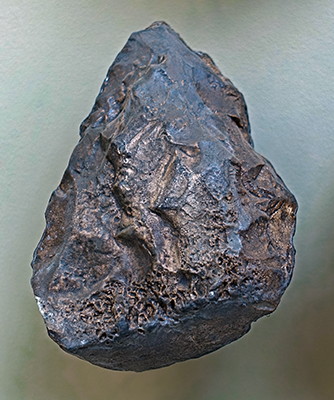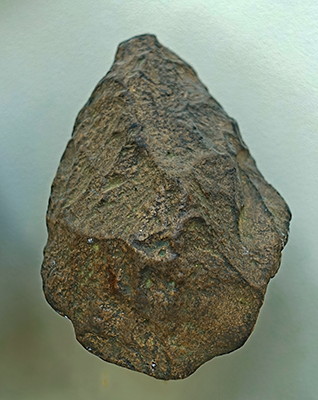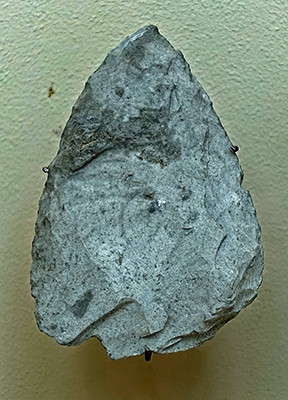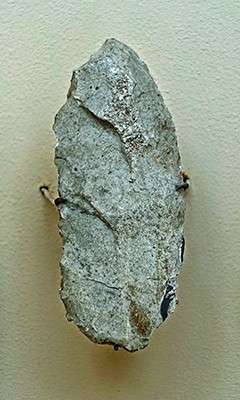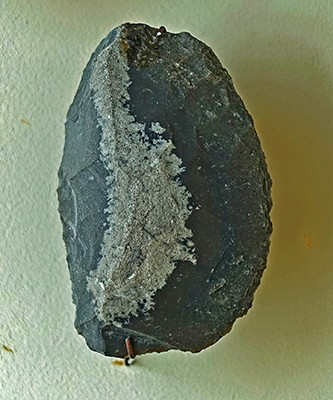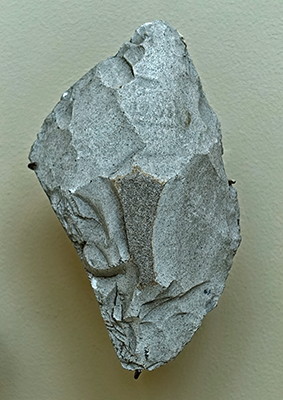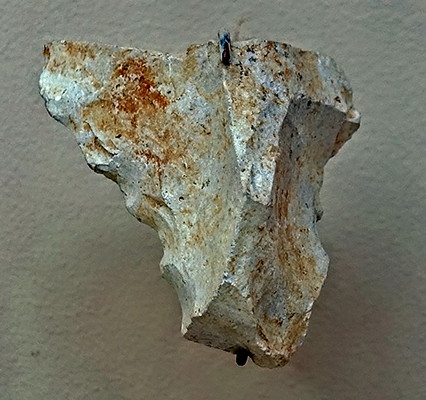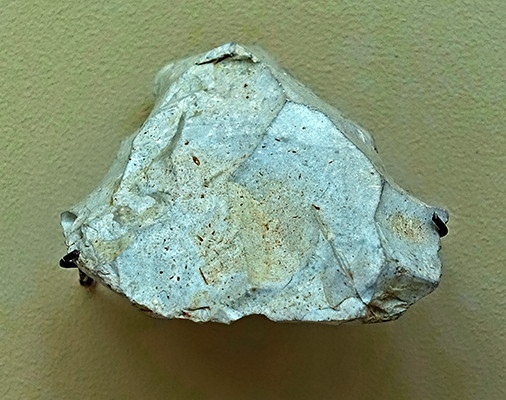Back to Don's Maps
 Back to Archaeological Sites
Back to Archaeological Sites
 Back to the review of hominins
Back to the review of hominins
 Back to Neanderthal Sites
Back to Neanderthal Sites
 Back to Central European Sites
Back to Central European Sites
Mousterian of Eastern Europe
Stone tools of the NeanderthalsText above translated and adapted from signage in the Anthropos Pavilion/Moravian Museum, Brno, Czech Republic.
While in the Middle Palaeolithic the tradition of hand axes produced directly from cores continues here and there, tools of formalised shapes, (mainly various side scrapers and hand points) predominate. The simplest and the predominant method of obtaining these tools (eg in the Micoquian circa 70 000 BP and the immediately preceding Taubachian, circa 100 000 BP) was shown by the jagged edges of the zig-zagged margins of the disc-shaped and irregular cores left behind.
Knapping to obtain a more precise shape was achieved by the so-called Levallois technique., which required considerable precision and foresight. The earlier method involved a great deal of material consumption and an uncertainty of the result, whereby it was difficult to obtain a roughly predictable shape.
The complicated but ultimately successful technique, however, disproves the skeptical view that the Neanderthals were incapable of conceptual thinking.
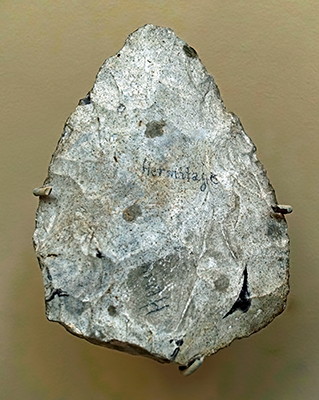
In Western Europe, small hand axes of triangular shape appeared with the Neanderthals.
Photo: Don Hitchcock 2018
Source and text: Original, Anthropos Pavilion/Moravian Museum, Brno, Czech Republic

Hand axes were found at Kadova u Mor, Krumlov, Určic u Prostějov and Lubná u Kroměříže in the Czech Republic.
Photo: Don Hitchcock 2018
Source and text: Facsimile, Anthropos Pavilion/Moravian Museum, Brno, Czech Republic
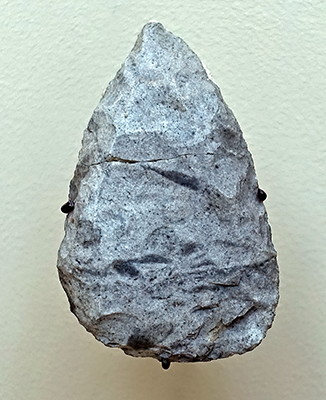
Mousterian axes were designed to be held in the hand, they did not have handles.
Photo: Don Hitchcock 2018
Source and text: Original, Anthropos Pavilion/Moravian Museum, Brno, Czech Republic
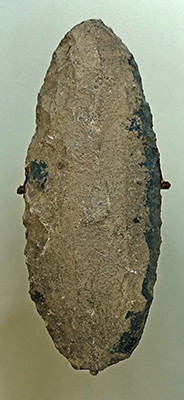
Side scrapers or racloirs, typical Mousterian tools, served mostly to scrape wood to shape and to smooth it, but the sharp edge was also suitable for skinning ( when a knife was needed, for example at the initial cut, and, later, the legs - Don ).
Photo: Don Hitchcock 2018
Source and text: Facsimile, Anthropos Pavilion/Moravian Museum, Brno, Czech Republic
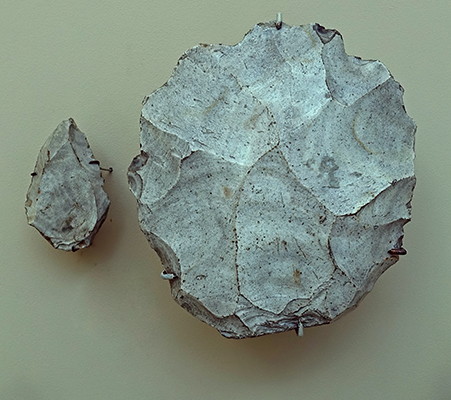
Levallois core (or nucleus) and point.
Photo: Don Hitchcock 2018
Source and text: Original, Anthropos Pavilion/Moravian Museum, Brno, Czech Republic
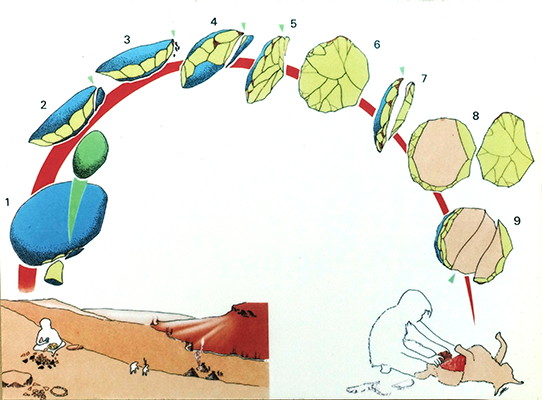
The Levallois process, from selection of the pebble to the final product.
Artist: Unknown
Rephotography: Don Hitchcock 2018
Source: Poster, Anthropos Pavilion/Moravian Museum, Brno, Czech Republic
Tools with notches and teeth, of the type known as the Denticulate Mousterian. The Denticulate Mousterian as a separate Middle Palaeolithic facies was first described by F. Bordes in his 1953 classification of the Mousterian industries of southwestern France.
Photo: Don Hitchcock 2018
Source and text: Original, Anthropos Pavilion/Moravian Museum, Brno, Czech Republic
Additional text: Kolobova (2012)
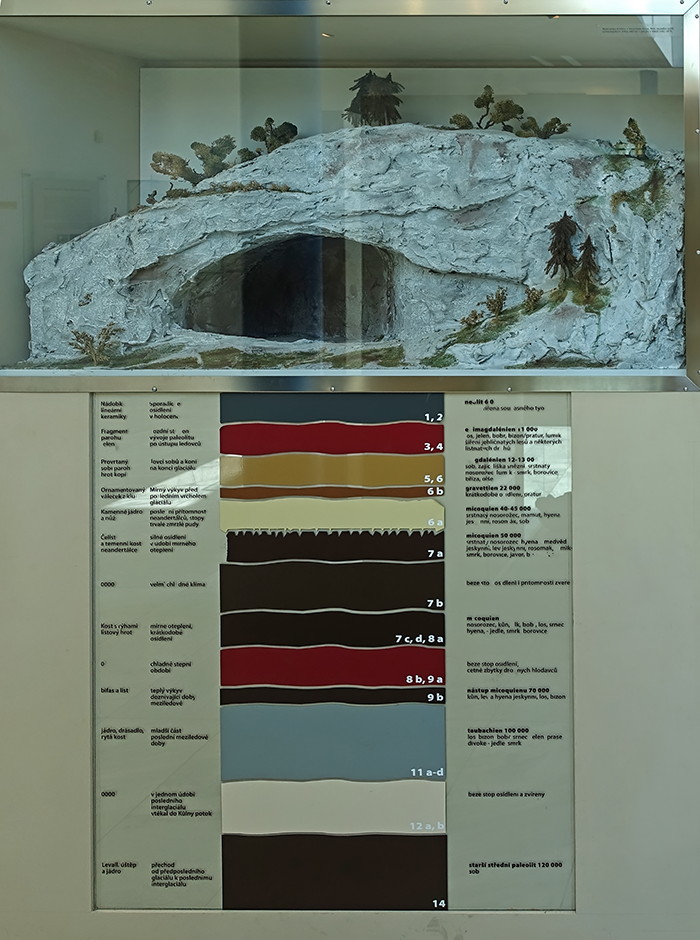
Model of Kůlna Cave in the Moravian Karst. Below, the profile of archaeological layers revealed in the cave in 1961 - 1976.
Photo: Don Hitchcock 2018
Model and graphics design: Unknown
Source and text: Diorama, Anthropos Pavilion/Moravian Museum, Brno, Czech Republic
| Kůlna Cave | ||||||
|---|---|---|---|---|---|---|
| Layer | Age | |||||
| 1,2 | Neolithic 6 000 BP | |||||
| 3,4 | Epi-Magdalenian (Azilian) 11 000 BP | |||||
| 5,6 | Magdalenian 12 000 BP - 13 000 BP | |||||
| 6b | Gravettian 22 000 BP | |||||
| 6c | Micoquian 40 000 BP - 45 000 BP | |||||
| 7a | Micoquian 50 000 BP | |||||
| 7b | Micoquian 50 000 BP | |||||
| 7c,d, 8a | Micoquian 50 000 BP | |||||
| 8b,9a | Micoquian 60 000 BP | |||||
| 9b | Micoquian 70 000 BP | |||||
| 10, 11a-d | Taubachian 100 000 BP | |||||
| 12, 13 Taubachian | 110 000 BP | |||||
| 14 | Old Middle Palaeolithic 120 000 BP | |||||
Layers and ages at Kůlna Cave.
Extra data on ages from Neruda, Nerudová (2013)
( note that there are minor inconsistencies with layer contents and ages between this table from the Brno Museum and the data from Neruda, Nerudová (2013) - Don )

Kůlna Cave. Location of the Kůlna Cave (a, b); southern entrance (c); stratigraphic schematic (d) of the Middle Palaeolithic sequence (modified after Valoch, 1988b) and ground plan of the cave (e) with indications of sectors (prepared by P. Neruda).
Source and text: Neruda, Nerudová (2013)
References
- Kolobova, K. et al., 2012: The denticulate Mousterian as a supposedly distinct facies in Western Central Asia, Archaeology Ethnology & Anthropology of Eurasia, 40/1 (2012) 11–23
- Neruda, P., Nerudová, Z., 2013: New radiocarbon data from Micoquian layers of the Kůlna Cave (Czech Republic), Quaternary International, 326–327. 157–167. 10.1016/j.quaint.2013.10.015.
Back to Don's Maps
 Back to Archaeological Sites
Back to Archaeological Sites
